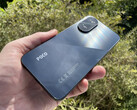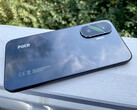Verdict: Only a few compromises overall
The Xiaomi Poco F7 excels in key areas: its 120 Hz AMOLED panel not only shines very brightly but is also well-balanced in terms of color accuracy; the Snapdragon 8s Gen 4 helps the 6.83-inch Poco phone deliver top-class performance. The Poco F7 also impresses with its long battery life and very short charging times. Further advantages include the robust casing with its glass surfaces and narrow display edges, a good main camera, and guaranteed OS updates until 2031.
Although Xiaomi has saved on some features, the list remains relatively straightforward. The Poco F7 shares negative points such as USB 2.0 and the lack of wireless charging with many other smartphones in the same price range. However, we find it a shame that despite WiFi 7, the 6 GHz WLAN is not supported and that eSIMs cannot be used.
Pros
Cons
Price and availability
Xiaomi launches discount campaigns for its smartphones from time to time, including at the time of testing. Xiaomi shop offers the 256 GB version of the Poco F7 for 400 euros (~US$466), while the version with 512 GB storage costs 420 euros (~US$490). Other online retailers, such as Amazon, charge similar prices.
Table of Contents
- Verdict: Only a few compromises overall
- Specifications
- Case - Poco F7 with glass surfaces and aluminum frame
- Features - 12 GB RAM and up to 512 GB memory
- Software - Android 15 and updates until 2031
- Communication and GNSS - WiFi 7, but without 6 GHz band
- Phone functions and voice quality
- Camera - Dual cameras with 50 MP and 8 MP
- Accessories and warranty - No charger; warranty extension as an option
- Input devices and operation - Responsive touchscreen with 480 Hz sampling
- Display - Very bright AMOLED panel with efficient PWM dimming
- Performance - Poco F7 with Snapdragon 8s Gen 4
- Games - Smooth gaming with up to 120 FPS
- Emissions - Poco F7 with heat problem
- Battery life - The Poco F7 runs and runs
- Notebookcheck overall rating
- Possible alternatives in comparison
Xiaomi presented its Poco F7 series in March of this year. The entry-level model is the Poco F7, for which Xiaomi promises nothing less than flagship-level performance and efficiency. With the Snapdragon 8 Gen 4, the Poco F7 features a very fast SoC that matches last year's top smartphones in terms of performance.
The Poco phone also has big things to offer in terms of display and battery, as the former measures a massive 6.83 inches and is said to achieve a brightness of up to 3200 nits. Xiaomi also puts the battery capacity at 6500 mAh, which few other mid-range smartphones can match. Charging with 90 watts is also included. Find out how much the Poco F7 can impress the competition in our review.
Specifications
Case - Poco F7 with glass surfaces and aluminum frame
With dimensions of 163.1 x 77.9 millimetres, the 8.2 millimetre flat Poco F7 is quite a chunk and, at just under 216 grams, also weighs a little more than similarly sized comparable devices. The main reason for the XXL dimensions is the exceptionally large 6500 mAh battery, which gives the 6.83-inch smartphone excellent battery life.
Available in black, white, and silver, the Poco F7 has a matt aluminum frame with large radii at the corners, making it comfortable to hold. The display frame is only 1.5 millimeters wide on the left, right, and top. Although it is just under 2 millimeters at the bottom, the Poco F7 still has an excellent display-to-surface ratio of 94 percent.
The AMOLED panel is protected by Gorilla Glass 7i, and there is also a glass cover on the back. This looks classy, but also makes Poco F7 a fingerprint magnet.
The dual camera protrudes around 2.5 millimetres from the back cover and quickly causes the smartphone to wobble if it is placed on the table without a protective cover.
Features - 12 GB RAM and up to 512 GB memory
The Poco F7 is available in two storage configurations:
- 12 GB LPDDR5 RAM + 256 GB UFS 4.1 mass storage: 450 euro RRP
- 12 GB LPDDR5 RAM + 512 GB UFS 4.1 mass storage: 500 euro RRP
Apart from the high-performance RAM/mass storage configuration, you can tell that the Poco F7 only offers mid-range features in some areas for the price of a mid-range phone.
This is less evident in features such as NFC, the IR blaster (which is interestingly located next to the camera module) and the stereo speakers, but in the USB-C port, which only works at USB 2.0 speed. However, in the copy test with the Samsung PSSD T7, it is fast by USB 2.0 standards with a data throughput of 37.2 MB/s.
Further equipment compromises due to the price: The Poco F7 does not support eSIMs and does not have a permanently active always-on display. The display is only visible for a maximum of 10 seconds, either after tapping or when the selfie camera recognizes that you have looked at the screen.
Software - Android 15 and updates until 2031
The Poco F7 runs Xiaomi's in-house operating system HyperOS 2.0, which is based on Android 15. Unfortunately, ads also appear in the UI as standard.
Xiaomi promises OS upgrades for 4 years and also wants to provide the smartphone with Android security updates for 6 years. The latter should happen every 90 days. At the time of testing (mid-August), the security updates were up to date as of June 1 and therefore current by Poco standards.
Sustainability
Poco offers a trade-in program for purchases via its website. The manufacturer provides no details about the amount of recycled materials in its smartphones, so it is impossible to make statements about the carbon footprint. Poco does not offer spare parts or repair manuals.
Communication and GNSS - WiFi 7, but without 6 GHz band
With WiFi 7, NFC, and Bluetooth 6.0, the Poco F7 is very up-to-date in terms of communication equipment. A wide range of mobile frequencies is also included, which should enable the Poco smartphone to receive a signal almost anywhere.
Connected to our reference router, Asus ROG Rapture GT-AXE11000, the Poco F7 achieves stable and fast transfer rates in the 5 GHz band. At its peak, it achieves 939 Mb/s and is therefore on a par with the comparison devices. However, the smartphone does not support the 6 GHz band despite WiFi 7.
| Networking | |
| Xiaomi Poco F7 | |
| iperf3 transmit AXE11000 | |
| iperf3 receive AXE11000 | |
| Motorola Edge 60 Pro | |
| iperf3 transmit AXE11000 6GHz | |
| iperf3 receive AXE11000 6GHz | |
| Nothing Phone (3) | |
| iperf3 transmit AXE11000 | |
| iperf3 receive AXE11000 | |
| iperf3 transmit AXE11000 6GHz | |
| iperf3 receive AXE11000 6GHz | |
| Realme GT 7 | |
| iperf3 transmit AXE11000 | |
| iperf3 receive AXE11000 | |
| Samsung Galaxy A56 5G | |
| iperf3 transmit AXE11000 | |
| iperf3 receive AXE11000 | |
| Xiaomi Poco F6 | |
| iperf3 transmit AXE11000 | |
| iperf3 receive AXE11000 | |
| iperf3 transmit AXE11000 6GHz | |
| iperf3 receive AXE11000 6GHz | |
| Average 802.11 a/b/g/n/ac/ax/be | |
| iperf3 transmit AXE11000 | |
| iperf3 receive AXE11000 | |
| iperf3 transmit AXE11000 6GHz | |
| iperf3 receive AXE11000 6GHz | |
| Average of class Smartphone | |
| iperf3 transmit AXE11000 | |
| iperf3 receive AXE11000 | |
| iperf3 transmit AXE11000 6GHz | |
| iperf3 receive AXE11000 6GHz | |
The Poco F7 supports all major GPS services and quickly and accurately determined our current location to within 3 meters during the test.
The precision remains high on the move, as the smartphone was almost as accurate as the Garmin Venu 2 fitness smartwatch on a 10-kilometer bike ride.
Phone functions and voice quality
The Poco F7 has two microphones and space for two nano SIM cards. In addition to VoLTE, it supports WiFi calls, allowing you to make calls via your home WiFi.
We have no complaints about the voice quality. Voices are reproduced clearly in the test, and the noise suppression also works reliably.
Camera - Dual cameras with 50 MP and 8 MP
Cell phone photographers have to make do with two rear cameras on the Poco F7: an optically stabilized 50 MP lens with the Sony IMX882 image sensor and an 8 MP ultra-wide-angle camera based on the OmniVision OV08F. There is no macro function.
The 20 MP selfie camera (OmniVision OV20B) takes decent photos and achieves good bokeh effects, but tends to blur images and lacks sharpness. However, the quality is easily sufficient for video calls or snapshots.
The main camera takes good pictures in daylight. They show a lot of detail, look natural, and are evenly exposed, but the color reproduction could be better overall. In low-light conditions, the main camera still delivers a satisfactory performance for this smartphone's price range. However, it is then no longer able to capture details sharply, meaning that more homogeneous image areas in terms of color are often washed out. The main camera digitally enlarges images up to 10x, and images with 5x magnification still look reasonably clear.
With its 8 MP, the ultra-wide-angle camera only plays second fiddle in the camera duo, but it doesn't do a bad job at all. Its images are colorful, but are quite aggressively blurred and out of focus at the edges.
The main camera records videos up to 4K at 60 frames per second and also takes well-stabilized footage in daylight. Switching between the two lenses is only possible up to a maximum of 1080p at 30 frames per second.
Image comparison
Choose a scene and navigate within the first image. One click changes the position on touchscreens. One click on the zoomed-in image opens the original in a new window. The first image shows the scaled photograph of the test device.
Main cameraMain cameraUltra wide-angle5x ZoomLow lightUnder controlled lighting conditions, the camera has to prove its skill once again in the test lab.
With optimal lighting, it captures the colors of the ColorChecker color chart fairly accurately, but is slightly off the ideal line for some red and brown tones as well as for medium gray tones. On the other hand, the main camera captures the test chart completely and clearly, even with 1 lux of residual light.


Accessories and warranty - No charger; warranty extension as an option
The Poco F7 comes with a USB cable (Type-A to Type-C), a SIM tool, a protective cover, a quick start guide, and warranty information. The 90-watt power supply unit is available in the Poco webshop for 40 euros.
The Poco F7 comes with a 12-month warranty in the EU. It can be extended with the insurance package Xiaomi Care, which additionally insures the smartphone against accidental damage and theft for 2 years. Depending on the package selected, this costs 39 or 59 euros.
Input devices and operation - Responsive touchscreen with 480 Hz sampling
The Poco F7 processes inputs on its AMOLED screen quickly and accurately, right into the corners of the display. According to Xiaomi, the screen is scanned up to 480 times per second and increases to up to 2560 Hz in games.
Overall, the Poco F7 can be operated very smoothly and is not slowed down in any way by any app in the test. The smartphone's linear vibration motor provides precise haptic feedback.
The fingerprint sensor located under the display reliably recognizes registered fingerprints. Users can also authenticate themselves biometrically via the 2D face recognition of the selfie camera. This is significantly less secure than using the fingerprint sensor, but it worked just as smoothly in the test.
Display - Very bright AMOLED panel with efficient PWM dimming
The 6.83-inch AMOLED screen has a resolution of 2772 x 1280 pixels and a high pixel density of 447 PPI. In addition to HDR10 and HDR10+, it also supports Dolby Vision and HLG.
Sensitive users will benefit from the screen's active PWM dimming. We measure a basic flicker of 120 Hz and a high PWM dimming frequency of 3846 Hz (manufacturer's specification 3840 Hz), which is also characterized by its low amplitude curve.
In terms of screen brightness, the Poco F7 delivers a top performance in the mid-range segment. On average, the AMOLED screen achieves a very good luminance of 1637 cd/m² even with a full white display, but increases even further to an excellent 3318 cd/m² in small image sections (APL18). We measured a peak brightness of 3272 cd/m² in HDR mode, which is almost as high as the peak brightness in SDR mode.
| |||||||||||||||||||||||||
Brightness Distribution: 95 %
Center on Battery: 1616 cd/m²
Contrast: ∞:1 (Black: 0 cd/m²)
ΔE ColorChecker Calman: 1.1 | ∀{0.5-29.43 Ø4.79}
ΔE Greyscale Calman: 2.2 | ∀{0.09-98 Ø5}
98.9% sRGB (Calman 2D)
Gamma: 2.24
CCT: 6639 K
| Xiaomi Poco F7 AMOLED, 2772x1280, 6.8" | Motorola Edge 60 Pro P-OLED, 2712x1220, 6.7" | Nothing Phone (3) AMOLED, 2800x1260, 6.7" | Realme GT 7 OLED, 2780x1264, 6.8" | Samsung Galaxy A56 5G Super AMOLED, 2340x1080, 6.7" | Xiaomi Poco F6 AMOLED, 2712x1220, 6.7" | |
|---|---|---|---|---|---|---|
| Screen | -1% | -45% | 15% | -22% | -27% | |
| Brightness middle (cd/m²) | 1616 | 1099 -32% | 1548 -4% | 1519 -6% | 1184 -27% | 1031 -36% |
| Brightness (cd/m²) | 1637 | 1073 -34% | 1535 -6% | 1530 -7% | 1179 -28% | 1028 -37% |
| Brightness Distribution (%) | 95 | 91 -4% | 98 3% | 97 2% | 99 4% | 96 1% |
| Black Level * (cd/m²) | ||||||
| Colorchecker dE 2000 * | 1.1 | 1.25 -14% | 2.2 -100% | 1 9% | 1.7 -55% | 1.4 -27% |
| Colorchecker dE 2000 max. * | 2.8 | 1.68 40% | 5.5 -96% | 1.7 39% | 3.2 -14% | 3.7 -32% |
| Greyscale dE 2000 * | 2.2 | 1.4 36% | 3.7 -68% | 1.1 50% | 2.4 -9% | 2.9 -32% |
| Gamma | 2.24 98% | 2.031 108% | 2.26 97% | 2.22 99% | 2.12 104% | 2.21 100% |
| CCT | 6639 98% | 6403 102% | 6787 96% | 6661 98% | 6544 99% | 6560 99% |
* ... smaller is better
Screen Flickering / PWM (Pulse-Width Modulation)
| Screen flickering / PWM detected | 120 Hz Amplitude: 16.95 % Secondary Frequency: 3846 Hz | ||
The display backlight flickers at 120 Hz (worst case, e.g., utilizing PWM) . The frequency of 120 Hz is very low, so the flickering may cause eyestrain and headaches after extended use. In comparison: 53 % of all tested devices do not use PWM to dim the display. If PWM was detected, an average of 8152 (minimum: 5 - maximum: 343500) Hz was measured. | |||
Measurement series with fixed zoom level and different brightness settings (The amplitude curve at minimum brightness looks flat, but this is due to the scaling. The info box shows the enlarged version of the amplitude at minimum brightness)
The AMOLED screen combines its impressive brightness with excellent picture quality. In terms of color accuracy and the other image parameters, the display is practically on the ideal line with the preset Original Color Pro enabled.
Display Response Times
| ↔ Response Time Black to White | ||
|---|---|---|
| 1.1 ms ... rise ↗ and fall ↘ combined | ↗ 0.5555 ms rise | |
| ↘ 0.5395 ms fall | ||
| The screen shows very fast response rates in our tests and should be very well suited for fast-paced gaming. In comparison, all tested devices range from 0.1 (minimum) to 240 (maximum) ms. » 4 % of all devices are better. This means that the measured response time is better than the average of all tested devices (20.3 ms). | ||
| ↔ Response Time 50% Grey to 80% Grey | ||
| 1.06 ms ... rise ↗ and fall ↘ combined | ↗ 0.5125 ms rise | |
| ↘ 0.5515 ms fall | ||
| The screen shows very fast response rates in our tests and should be very well suited for fast-paced gaming. In comparison, all tested devices range from 0.165 (minimum) to 636 (maximum) ms. » 4 % of all devices are better. This means that the measured response time is better than the average of all tested devices (31.7 ms). | ||
The Poco F7 is a force to be reckoned with outdoors. Content remains clearly visible on the viewing-angle-stable display even in direct sunlight. You should definitely leave the brightness sensor activated, as the maximum display brightness is only 627 cd/m² without the sensor.
Performance - Poco F7 with Snapdragon 8s Gen 4
The Poco F7 is one of the first smartphones with the Snapdragon 8s Gen 4 SoC. The 4 nm chip serves as a cheaper alternative to the Snapdragon 8 Elite, which is used, for example, in the Poco F7 Ultra and is said to perform up to 31% better in terms of CPU performance than the Snapdragon 8s Gen 3.
The Snapdragon 8s Gen 4 does not achieve the performance of the Snapdragon 8 Elite, but has more than enough power for everyday use, which can compete with that of a top-of-the-range model. Similarly fast is the MediaTek Dimensity 9400e of the realme GT 7.
| UL Procyon AI Inference for Android - Overall Score NNAPI | |
| Motorola Edge 60 Pro | |
| Realme GT 7 | |
| Average of class Smartphone (3769 - 81594, n=137, last 2 years) | |
| Nothing Phone (3) | |
| Average Qualcomm Snapdragon 8s Gen 4 SM8735 (16446 - 17213, n=2) | |
| Xiaomi Poco F7 | |
| Xiaomi Poco F6 | |
| Samsung Galaxy A56 5G | |
In the GPU benchmarks, the Snapdragon 8s Gen 4 performs much better than its predecessor. At the same time, the Poco F7, with its Adreno 825 GPU, is also one of the few mid-range smartphones that can crack the 30 FPS mark in GFXBench's 4K Aztec Ruins benchmark. The Immortalis-G720 MP12 GPU in the realme GT 7 is even a touch faster in some benchmarks.
GFXBench (DX / GLBenchmark) 2.7: T-Rex Onscreen | 1920x1080 T-Rex Offscreen
GFXBench 3.0: on screen Manhattan Onscreen OGL | 1920x1080 1080p Manhattan Offscreen
GFXBench 3.1: on screen Manhattan ES 3.1 Onscreen | 1920x1080 Manhattan ES 3.1 Offscreen
GFXBench: on screen Car Chase Onscreen | 1920x1080 Car Chase Offscreen | on screen Aztec Ruins High Tier Onscreen | 2560x1440 Aztec Ruins High Tier Offscreen | on screen Aztec Ruins Normal Tier Onscreen | 1920x1080 Aztec Ruins Normal Tier Offscreen | 3840x2160 4K Aztec Ruins High Tier Offscreen
| 3DMark / Wild Life Extreme Unlimited | |
| Realme GT 7 | |
| Nothing Phone (3) | |
| Xiaomi Poco F7 | |
| Motorola Edge 60 Pro | |
| Xiaomi Poco F6 | |
| Samsung Galaxy A56 5G | |
| 3DMark / Wild Life Extreme | |
| Realme GT 7 | |
| Nothing Phone (3) | |
| Xiaomi Poco F7 | |
| Motorola Edge 60 Pro | |
| Xiaomi Poco F6 | |
| Samsung Galaxy A56 5G | |
| 3DMark / Wild Life Unlimited Score | |
| Realme GT 7 | |
| Nothing Phone (3) | |
| Xiaomi Poco F7 | |
| Xiaomi Poco F6 | |
| Motorola Edge 60 Pro | |
| Samsung Galaxy A56 5G | |
| 3DMark / Solar Bay Score | |
| Nothing Phone (3) | |
| Xiaomi Poco F7 | |
| Realme GT 7 | |
| Xiaomi Poco F6 | |
| Motorola Edge 60 Pro | |
| 3DMark / Solar Bay Unlimited Score | |
| Nothing Phone (3) | |
| Xiaomi Poco F7 | |
| Realme GT 7 | |
| Xiaomi Poco F6 | |
| Motorola Edge 60 Pro | |
| 3DMark / Steel Nomad Light Unlimited Score | |
| Nothing Phone (3) | |
| Xiaomi Poco F7 | |
| Realme GT 7 | |
| Motorola Edge 60 Pro | |
| Xiaomi Poco F6 | |
| Samsung Galaxy A56 5G | |
| 3DMark / Steel Nomad Light Score | |
| Xiaomi Poco F7 | |
| Nothing Phone (3) | |
| Realme GT 7 | |
| Motorola Edge 60 Pro | |
| Xiaomi Poco F6 | |
| Samsung Galaxy A56 5G | |
| GFXBench (DX / GLBenchmark) 2.7 / T-Rex Onscreen | |
| Xiaomi Poco F6 | |
| Motorola Edge 60 Pro | |
| Xiaomi Poco F7 | |
| Samsung Galaxy A56 5G | |
| Realme GT 7 | |
| Nothing Phone (3) | |
| GFXBench (DX / GLBenchmark) 2.7 / T-Rex Offscreen | |
| Realme GT 7 | |
| Xiaomi Poco F7 | |
| Nothing Phone (3) | |
| Xiaomi Poco F6 | |
| Motorola Edge 60 Pro | |
| Samsung Galaxy A56 5G | |
| GFXBench 3.0 / Manhattan Onscreen OGL | |
| Xiaomi Poco F6 | |
| Motorola Edge 60 Pro | |
| Xiaomi Poco F7 | |
| Samsung Galaxy A56 5G | |
| Realme GT 7 | |
| Nothing Phone (3) | |
| GFXBench 3.0 / 1080p Manhattan Offscreen | |
| Nothing Phone (3) | |
| Xiaomi Poco F7 | |
| Motorola Edge 60 Pro | |
| Realme GT 7 | |
| Xiaomi Poco F6 | |
| Samsung Galaxy A56 5G | |
| GFXBench 3.1 / Manhattan ES 3.1 Onscreen | |
| Xiaomi Poco F7 | |
| Motorola Edge 60 Pro | |
| Xiaomi Poco F6 | |
| Samsung Galaxy A56 5G | |
| Realme GT 7 | |
| Nothing Phone (3) | |
| GFXBench 3.1 / Manhattan ES 3.1 Offscreen | |
| Xiaomi Poco F7 | |
| Nothing Phone (3) | |
| Realme GT 7 | |
| Motorola Edge 60 Pro | |
| Xiaomi Poco F6 | |
| Samsung Galaxy A56 5G | |
| GFXBench / Car Chase Onscreen | |
| Xiaomi Poco F7 | |
| Motorola Edge 60 Pro | |
| Xiaomi Poco F6 | |
| Realme GT 7 | |
| Nothing Phone (3) | |
| Samsung Galaxy A56 5G | |
| GFXBench / Car Chase Offscreen | |
| Nothing Phone (3) | |
| Realme GT 7 | |
| Xiaomi Poco F7 | |
| Motorola Edge 60 Pro | |
| Xiaomi Poco F6 | |
| Samsung Galaxy A56 5G | |
| GFXBench / Aztec Ruins High Tier Onscreen | |
| Xiaomi Poco F7 | |
| Motorola Edge 60 Pro | |
| Xiaomi Poco F6 | |
| Realme GT 7 | |
| Nothing Phone (3) | |
| Samsung Galaxy A56 5G | |
| GFXBench / Aztec Ruins High Tier Offscreen | |
| Realme GT 7 | |
| Xiaomi Poco F7 | |
| Nothing Phone (3) | |
| Motorola Edge 60 Pro | |
| Xiaomi Poco F6 | |
| Samsung Galaxy A56 5G | |
| GFXBench / Aztec Ruins Normal Tier Onscreen | |
| Xiaomi Poco F7 | |
| Motorola Edge 60 Pro | |
| Xiaomi Poco F6 | |
| Realme GT 7 | |
| Nothing Phone (3) | |
| Samsung Galaxy A56 5G | |
| GFXBench / Aztec Ruins Normal Tier Offscreen | |
| Realme GT 7 | |
| Nothing Phone (3) | |
| Xiaomi Poco F7 | |
| Motorola Edge 60 Pro | |
| Xiaomi Poco F6 | |
| Samsung Galaxy A56 5G | |
| GFXBench / 4K Aztec Ruins High Tier Offscreen | |
| Realme GT 7 | |
| Xiaomi Poco F7 | |
| Nothing Phone (3) | |
| Motorola Edge 60 Pro | |
| Xiaomi Poco F6 | |
| Samsung Galaxy A56 5G | |
The browser benchmarks pose no challenge for the Poco F7, as it almost always lands in first place in the test field. Even without knowing the exact results, you can see that websites load quickly and nothing stutters when browsing.
| Jetstream 2 - 2.0 Total Score | |
| Xiaomi Poco F7 (Chrome 138.0.7204.168) | |
| Average Qualcomm Snapdragon 8s Gen 4 SM8735 (233 - 237, n=2) | |
| Nothing Phone (3) (Chrome 138.0.7204.179) | |
| Xiaomi Poco F6 (Chrome 127.0.6533.64) | |
| Average of class Smartphone (23.8 - 387, n=153, last 2 years) | |
| Samsung Galaxy A56 5G (Chrome 134) | |
| Realme GT 7 (Chrome 137) | |
| Motorola Edge 60 Pro (Chrome 137.0.7151.115) | |
| Speedometer 2.0 - Result 2.0 | |
| Nothing Phone (3) (Chrome 138.0.7204.179) | |
| Average Qualcomm Snapdragon 8s Gen 4 SM8735 (339 - 347, n=2) | |
| Xiaomi Poco F7 (Chrome 138.0.7204.168) | |
| Xiaomi Poco F6 (Chrome 127.0.6533.64) | |
| Average of class Smartphone (15.2 - 643, n=129, last 2 years) | |
| Realme GT 7 (Chrome 137) | |
| Samsung Galaxy A56 5G (Chrome 134) | |
| Motorola Edge 60 Pro (Chrome 137.0.7151.115) | |
| Speedometer 3 - Score 3.0 | |
| Nothing Phone (3) (Chrome) | |
| Average Qualcomm Snapdragon 8s Gen 4 SM8735 (19.7 - 21.3, n=2) | |
| Xiaomi Poco F7 (Chrome 138.0.7204.168) | |
| Average of class Smartphone (1.03 - 42.8, n=123, last 2 years) | |
| Samsung Galaxy A56 5G (Chrome 134) | |
| Xiaomi Poco F6 (Chrome 127.0.6533.64) | |
| Realme GT 7 (Chrome 137) | |
| WebXPRT 4 - Overall | |
| Xiaomi Poco F7 (Chrome 138.0.7204.168) | |
| Xiaomi Poco F6 (Chrome 127.0.6533.64) | |
| Average Qualcomm Snapdragon 8s Gen 4 SM8735 (137 - 184, n=2) | |
| Average of class Smartphone (27 - 306, n=147, last 2 years) | |
| Samsung Galaxy A56 5G (Chrome 134) | |
| Nothing Phone (3) (Chrome 138.0.7204.179) | |
| Realme GT 7 (Chrome 137) | |
| Motorola Edge 60 Pro (Chrome 137.0.7151.115) | |
| Octane V2 - Total Score | |
| Nothing Phone (3) (Chrome 138.0.7204.179) | |
| Average Qualcomm Snapdragon 8s Gen 4 SM8735 (71781 - 71875, n=2) | |
| Xiaomi Poco F7 (Chrome 138.0.7204.168) | |
| Xiaomi Poco F6 (Chrome 127.0.6533.64) | |
| Samsung Galaxy A56 5G (Chrome 134) | |
| Average of class Smartphone (2228 - 121337, n=200, last 2 years) | |
| Realme GT 7 (Chrome 137) | |
| Motorola Edge 60 Pro (Chrome 137.0.7151.115) | |
| Mozilla Kraken 1.1 - Total | |
| Average of class Smartphone (257 - 28190, n=155, last 2 years) | |
| Motorola Edge 60 Pro (Chrome 137.0.7151.115) | |
| Realme GT 7 (Chrome 137) | |
| Samsung Galaxy A56 5G (Chrome 134) | |
| Xiaomi Poco F6 (Chrome 127.0.6533.64) | |
| Xiaomi Poco F7 (Chrome 138.0.7204.168) | |
| Average Qualcomm Snapdragon 8s Gen 4 SM8735 (521 - 534, n=2) | |
| Nothing Phone (3) (Chrome 138.0.7204.179) | |
* ... smaller is better
With its UFS 4.1 data storage chip, the Poco F7 is in good company. Many comparably fast mid-range cell phones achieve a similarly high data throughput. Among the comparison devices, only the Samsung Galaxy A56 5G is slower as it relies on UFS 3.1 memory.
| Xiaomi Poco F7 | Motorola Edge 60 Pro | Nothing Phone (3) | Realme GT 7 | Samsung Galaxy A56 5G | Xiaomi Poco F6 | Average 512 GB UFS 4.1 Flash | Average of class Smartphone | |
|---|---|---|---|---|---|---|---|---|
| AndroBench 3-5 | 12% | 7% | 9% | -59% | -12% | -5% | -35% | |
| Sequential Read 256KB (MB/s) | 4042.86 | 3852.89 -5% | 3720.79 -8% | 3849.12 -5% | 1634.8 -60% | 4103.79 2% | 3809 ? -6% | 2222 ? -45% |
| Sequential Write 256KB (MB/s) | 4035.38 | 3842.42 -5% | 3270.73 -19% | 3442.58 -15% | 999.95 -75% | 3143.04 -22% | 3258 ? -19% | 1838 ? -54% |
| Random Read 4KB (MB/s) | 346.06 | 439.58 27% | 438.57 27% | 444.28 28% | 207.01 -40% | 312.22 -10% | 380 ? 10% | 295 ? -15% |
| Random Write 4KB (MB/s) | 453.7 | 585.66 29% | 585.11 29% | 578.79 28% | 184.08 -59% | 373.77 -18% | 439 ? -3% | 336 ? -26% |
Games - Smooth gaming with up to 120 FPS
The Poco F7 has no problems displaying current games smoothly. The measurements with Gamebench prove that the Snapdragon 8s Gen 4 ensures a butter-smooth display in our small selection of games. In PUBG Mobile, 120 FPS is also possible in the graphics level Liquid and the frame rate setting Ultra Extreme.
Emissions - Poco F7 with heat problem
Temperature
The Snapdragon 8s Gen 4 makes the Poco F7 very fast, but also pushes its internal cooling system to its limits from time to time. We measured surface temperatures of up to 45.4 °C under continuous load. This no longer feels pleasant.
The Poco cell phone reproducibly aborts some of the 3DMark stress tests with an overheating message. All stress tests only run completely when the CPU temperature is initially at a maximum of 30 °C. This requires the smartphone to cool down for a considerable amount of time. At the end of the stress tests, it can be seen that around 1/3 of the performance is lost due to throttling.
(-) The maximum temperature on the upper side is 45.4 °C / 114 F, compared to the average of 35.2 °C / 95 F, ranging from 21.9 to 247 °C for the class Smartphone.
(-) The bottom heats up to a maximum of 45.1 °C / 113 F, compared to the average of 34 °C / 93 F
(+) In idle usage, the average temperature for the upper side is 25.8 °C / 78 F, compared to the device average of 32.9 °C / 91 F.
3DMark Steel Nomad Stress Test
| 3DMark | |
| Wild Life Stress Test Stability | |
| Realme GT 7 | |
| Samsung Galaxy A56 5G | |
| Xiaomi Poco F7 | |
| Xiaomi Poco F6 | |
| Nothing Phone (3) | |
| Motorola Edge 60 Pro | |
| Wild Life Extreme Stress Test | |
| Samsung Galaxy A56 5G | |
| Xiaomi Poco F6 | |
| Xiaomi Poco F7 | |
| Realme GT 7 | |
| Nothing Phone (3) | |
| Motorola Edge 60 Pro | |
| Solar Bay Stress Test Stability | |
| Realme GT 7 | |
| Xiaomi Poco F6 | |
| Xiaomi Poco F7 | |
| Nothing Phone (3) | |
| Motorola Edge 60 Pro | |
| Steel Nomad Light Stress Test Stability | |
| Realme GT 7 | |
| Samsung Galaxy A56 5G | |
| Xiaomi Poco F6 | |
| Xiaomi Poco F7 | |
| Nothing Phone (3) | |
| Motorola Edge 60 Pro | |
Speakers
The Poco F7 produces a good stereo sound, which typically emphasizes the mids and highs for smartphone speakers, while the lows remain relatively weak.
The USB-C port and Bluetooth 6.0 are available for wired and wireless audio output.
Xiaomi Poco F7 audio analysis
(+) | speakers can play relatively loud (89 dB)
Bass 100 - 315 Hz
(-) | nearly no bass - on average 24.7% lower than median
(±) | linearity of bass is average (10.4% delta to prev. frequency)
Mids 400 - 2000 Hz
(±) | higher mids - on average 5% higher than median
(+) | mids are linear (5.1% delta to prev. frequency)
Highs 2 - 16 kHz
(+) | balanced highs - only 4.2% away from median
(+) | highs are linear (3.7% delta to prev. frequency)
Overall 100 - 16.000 Hz
(±) | linearity of overall sound is average (17% difference to median)
Compared to same class
» 9% of all tested devices in this class were better, 7% similar, 84% worse
» The best had a delta of 11%, average was 35%, worst was 134%
Compared to all devices tested
» 29% of all tested devices were better, 8% similar, 63% worse
» The best had a delta of 4%, average was 24%, worst was 134%
Samsung Galaxy A56 5G audio analysis
(+) | speakers can play relatively loud (87.7 dB)
Bass 100 - 315 Hz
(-) | nearly no bass - on average 22.3% lower than median
(±) | linearity of bass is average (8.1% delta to prev. frequency)
Mids 400 - 2000 Hz
(±) | higher mids - on average 5.1% higher than median
(+) | mids are linear (5.8% delta to prev. frequency)
Highs 2 - 16 kHz
(±) | higher highs - on average 8% higher than median
(+) | highs are linear (5.5% delta to prev. frequency)
Overall 100 - 16.000 Hz
(±) | linearity of overall sound is average (20.5% difference to median)
Compared to same class
» 34% of all tested devices in this class were better, 9% similar, 57% worse
» The best had a delta of 11%, average was 35%, worst was 134%
Compared to all devices tested
» 53% of all tested devices were better, 8% similar, 39% worse
» The best had a delta of 4%, average was 24%, worst was 134%
Battery life - The Poco F7 runs and runs
Power consumption
Compared to its predecessor, the Poco F7 has roughly the same power consumption when idle. Under load, however, it runs much more economically than the Poco F6 and also undercuts many of its competitors, including the Motorola Edge 60 Pro and the Samsung Galaxy A56 5G.
The Poco F7's 6500 mAh battery can be charged with up to 90 watts. For its part, the smartphone can serve as an energy supplier, as it supports wired reverse charging with up to 22.5 watts. However, the Poco F7 does not support wireless charging.
We used the optional 90-watt power supply unit for the test. This completes a charging cycle within 42 minutes. You only have to wait 31 minutes to charge up to 80 percent.
| Off / Standby | |
| Idle | |
| Load |
|
Key:
min: | |
| Xiaomi Poco F7 6500 mAh | Motorola Edge 60 Pro 6000 mAh | Nothing Phone (3) 5150 mAh | Realme GT 7 7000 mAh | Samsung Galaxy A56 5G 5000 mAh | Xiaomi Poco F6 5000 mAh | Average Qualcomm Snapdragon 8s Gen 4 SM8735 | Average of class Smartphone | |
|---|---|---|---|---|---|---|---|---|
| Power Consumption | -37% | 45% | 29% | -8% | 5% | 14% | 0% | |
| Idle Minimum * (Watt) | 1.18 | 1.3 -10% | 0.4 66% | 0.8 32% | 0.72 39% | 0.8 32% | 0.79 ? 33% | 0.847 ? 28% |
| Idle Average * (Watt) | 1.44 | 1.9 -32% | 0.7 51% | 0.93 35% | 1.45 -1% | 1.13 22% | 1.07 ? 26% | 1.431 ? 1% |
| Idle Maximum * (Watt) | 1.48 | 2.4 -62% | 1.21 18% | 1.19 20% | 1.49 -1% | 1.17 21% | 1.345 ? 9% | 1.61 ? -9% |
| Load Average * (Watt) | 7.62 | 8.6 -13% | 9.68 -27% | 7.35 4% | 7.62 ? -0% | 7.09 ? 7% | ||
| Load Maximum * (Watt) | 8.92 | 14.9 -67% | 13.39 -50% | 13.76 -54% | 8.92 ? -0% | 11.2 ? -26% |
* ... smaller is better
Power consumption: Geekbench (150 cd/m²)
Power consumption: GFXbench (150 cd/m²)
Battery life
The Poco F7's 6500 mAh cell is not only one of the highest-capacity batteries in this price range, but according to Xiaomi, it is also the largest battery used in a Poco F-series to date.
The Poco F7 performs excellently in the realistic battery tests. When playing an HD video in a continuous loop, it only runs out of power after just under 33 hours and manages almost 23 hours in a WLAN scenario. Among the comparison devices, the Poco F7 can only be beaten by the Motorola Edge 60 Pro and the realme GT 7, which is due to their equally large batteries.
| Xiaomi Poco F7 6500 mAh | Motorola Edge 60 Pro 6000 mAh | Nothing Phone (3) 5150 mAh | Realme GT 7 7000 mAh | Samsung Galaxy A56 5G 5000 mAh | Xiaomi Poco F6 5000 mAh | |
|---|---|---|---|---|---|---|
| Battery runtime | -1% | -19% | 5% | 13% | -30% | |
| Reader / Idle (h) | 40.8 | 52.9 30% | ||||
| H.264 (h) | 32.7 | 41.8 28% | ||||
| WiFi v1.3 (h) | 22.7 | 22.4 -1% | 18.4 -19% | 23.8 5% | 20 -12% | 16 -30% |
| Load (h) | 3.4 | 3.6 6% |
Notebookcheck overall rating
The Xiaomi Poco F7 impresses with its good price-performance ratio. Advantages such as a bright display, long battery life, and high performance are offset by relatively few disadvantages such as the lack of eSIM support and the absence of wireless charging.
Xiaomi Poco F7
- 10/15/2025 v8
Manuel Masiero
Possible alternatives in comparison
Image | Model / Review | Price | Weight | Drive | Display |
|---|---|---|---|---|---|
| Xiaomi Poco F7 Qualcomm Snapdragon 8s Gen 4 SM8735 ⎘ Qualcomm Adreno 825 ⎘ 12 GB Memory, 512 GB | Amazon: 1. $579.99 XIAOMI Poco F7 PRO 5G + 4G L... 2. $345.00 Xiaomi Poco X7 PRO 5G + 4G L... 3. $350.00 XIAOMI Poco X7 PRO 5G + 4G L... | 215.7 g | 512 GB UFS 4.1 Flash | 6.83" 2772x1280 447 PPI AMOLED | |
| Motorola Edge 60 Pro MediaTek Dimensity 8350 ⎘ ARM Mali-G615 MP6 ⎘ 12 GB Memory, 512 GB | Amazon: 1. $11.99 Ibywind For Motorola Edge 60... 2. $6.98 Natbok 2 Pack 3D Compatible ... 3. $8.88 LXEEOLX [2 Pack Hydrogel Scr... List Price: 600 Euro | 186 g | 512 GB UFS 4.0 Flash | 6.67" 2712x1220 446 PPI P-OLED | |
| Nothing Phone (3) Qualcomm Snapdragon 8s Gen 4 SM8735 ⎘ Qualcomm Adreno 825 ⎘ 16 GB Memory, 512 GB | Amazon: $719.00 List Price: 899 Euro | 218 g | 512 GB UFS 4.0 Flash | 6.67" 2800x1260 460 PPI AMOLED | |
| Realme GT 7 Mediatek Dimensity 9400e ⎘ ARM Immortalis-G720 MP12 ⎘ 12 GB Memory, 512 GB | Amazon: 1. $11.99 Ibywind For Realme GT 7/GT 7... 2. $8.99 Suttkue for Realme GT 7 Scre... 3. AKABEILA [3 Pack Privacy Scr... | 206 g | 512 GB UFS 4.0 Flash | 6.78" 2780x1264 450 PPI OLED | |
| Samsung Galaxy A56 5G Samsung Exynos 1580 ⎘ Samsung Xclipse 540 ⎘ 8 GB Memory, 128 GB | Amazon: 1. $378.49 Samsung Galaxy A56 5G 2025 |... 2. $359.29 Samsung Galaxy A56 5G 2025 |... 3. $499.99 Samsung Galaxy A56 5G Cell P... List Price: 479€ | 198 g | 128 GB UFS 3.1 Flash | 6.70" 2340x1080 385 PPI Super AMOLED | |
| Xiaomi Poco F6 Qualcomm Snapdragon 8s Gen 3 ⎘ Qualcomm Adreno 735 ⎘ 12 GB Memory, 512 GB | Amazon: $356.99 List Price: 500€ | 179 g | 512 GB UFS 4.0 Flash | 6.67" 2712x1220 446 PPI AMOLED |
Transparency
The selection of devices to be reviewed is made by our editorial team. The test sample was provided to the author as a loan by the manufacturer or retailer for the purpose of this review. The lender had no influence on this review, nor did the manufacturer receive a copy of this review before publication. There was no obligation to publish this review. As an independent media company, Notebookcheck is not subjected to the authority of manufacturers, retailers or publishers.
This is how Notebookcheck is testing
Every year, Notebookcheck independently reviews hundreds of laptops and smartphones using standardized procedures to ensure that all results are comparable. We have continuously developed our test methods for around 20 years and set industry standards in the process. In our test labs, high-quality measuring equipment is utilized by experienced technicians and editors. These tests involve a multi-stage validation process. Our complex rating system is based on hundreds of well-founded measurements and benchmarks, which maintains objectivity. Further information on our test methods can be found here.






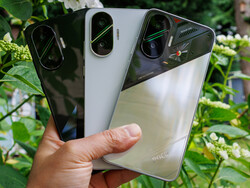
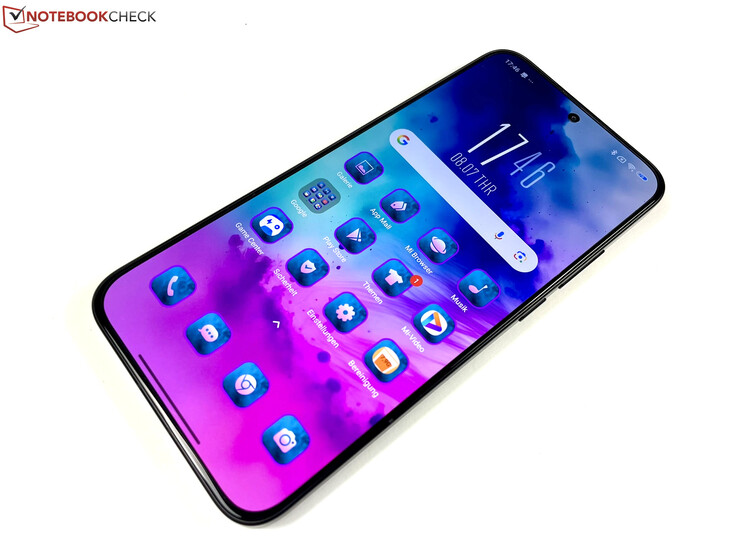














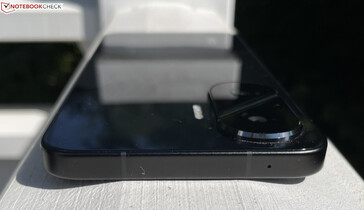
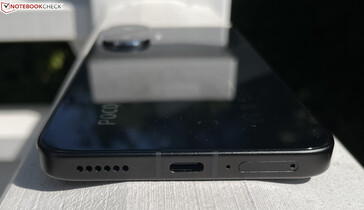
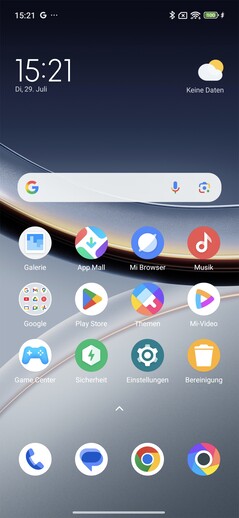
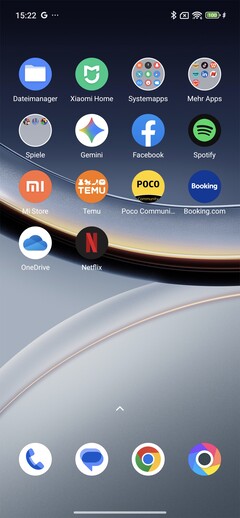
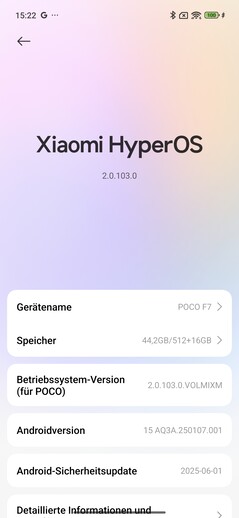
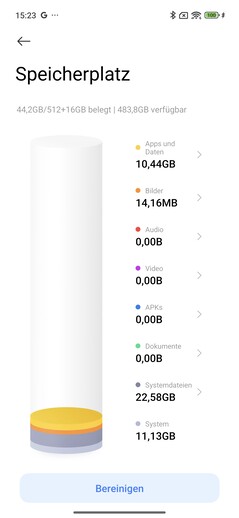
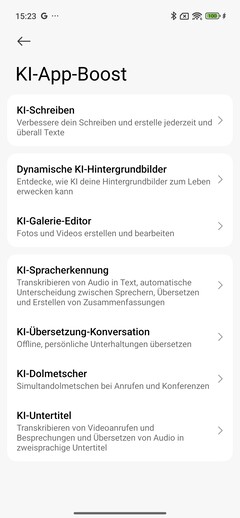
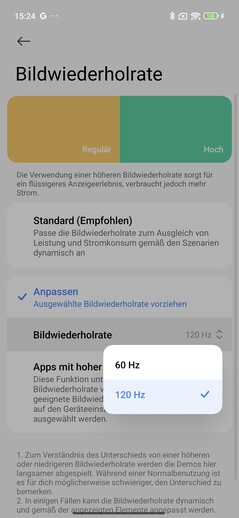
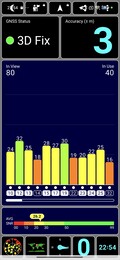
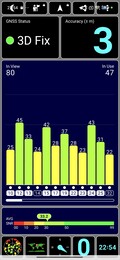
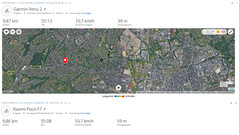




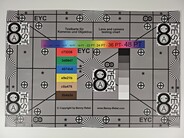



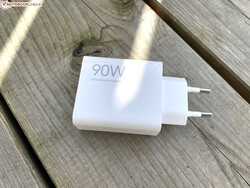

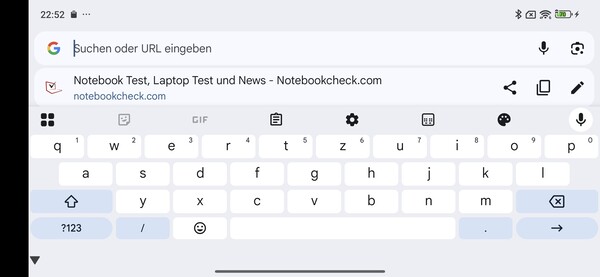

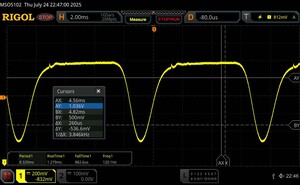








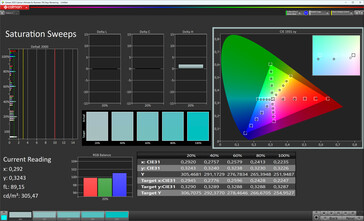
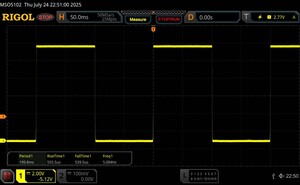
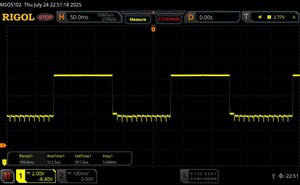







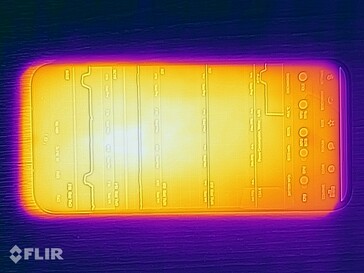
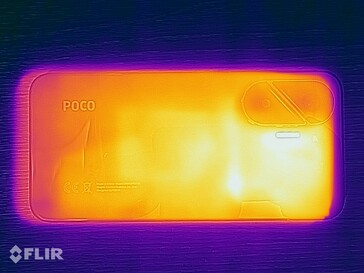
 Total Sustainability Score:
Total Sustainability Score: 






